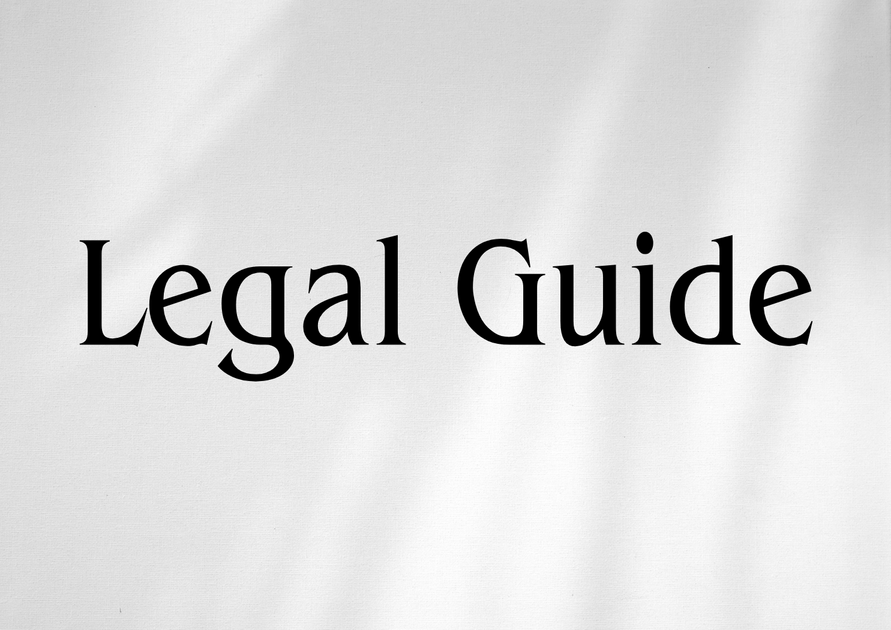Introduction: The Regional Significance of SAMA’s Regulatory Role
In the rapidly evolving landscape of Middle Eastern finance, cross-border regulatory compliance and partnership are integral to sustainable business operations. The Saudi Central Bank (SAMA) has emerged as a central pillar of financial regulation in the Kingdom of Saudi Arabia (KSA), with clear implications for UAE-based businesses and professionals operating within the GCC region. As the Saudi and UAE markets continue to deepen collaborations in financial services, digital banking, insurance, and fintech, understanding SAMA’s regulatory mandates becomes essential for decision-makers, legal counsels, compliance officers, and HR managers in the UAE. The recent wave of legal reforms and increasingly harmonized frameworks across the GCC—including strategic alignments in fintech regulatory sandboxes, anti-money laundering (AML) controls, and digital payment standards—have made SAMA’s approach directly relevant for UAE enterprises, particularly in the context of UAE law 2025 updates and the evolving federal decrees of the UAE.
This article provides a comprehensive analysis of the Saudi Central Bank’s role in financial regulation, drawing direct parallels, cautionary guidance, and actionable steps for UAE-based business entities. Through legal expertise and consultancy-grade insights, this resource will help you navigate the cross-jurisdictional risks and opportunities in today’s interconnected financial environment.
Table of Contents
- Understanding SAMA: Mandate and Legal Foundation
- Core Regulatory Frameworks Overseen by SAMA
- Strategic Enforcement Mechanisms and Supervisory Tools
- Cross-Border Regulatory Collaboration: SAMA and UAE Authorities
- Case Studies: UAE Business Scenarios under SAMA Frameworks
- Risks of Non-Compliance and Best Practice Strategies
- Future Outlook: Legal Trends Shaping GCC Financial Services
- Conclusion: Strategic Recommendations for Sustainable Compliance
Understanding SAMA: Mandate and Legal Foundation
The Evolution of the Saudi Central Bank’s Legal Authority
The Saudi Central Bank—historically known as the Saudi Arabian Monetary Authority (SAMA)—was established under Royal Decree No. 23 of 1952. Its remit has expanded alongside the Kingdom’s economic transformation initiatives, including the Saudi Vision 2030. SAMA’s founding statutes and subsequent updates entrench its central roles: monetary policy administration, regulation and supervision of banks, insurance, payment systems, and emerging fintech platforms.
UAE-based financial institutions engaging in KSA should note that SAMA holds sweeping powers akin to the Central Bank of the UAE (CBUAE), which operates under Federal Decree-Law No. (14) of 2018 Regarding the Central Bank and Organization of Financial Institutions and Activities, further bolstered by Ministerial Guidelines issued in 2022 and 2023. These parallels underscore the need for UAE entities to be well-versed in both jurisdictions’ regulatory foundations when planning KSA market entry or cross-border partnerships.
Key Statutory Mandates
- Banking regulation: Oversight of commercial banks, foreign bank branches, and credit institutions.
- Monetary policy administration: Currency issuance, exchange rate stability, and monetary reserves management.
- Insurance sector supervision: Licensing and continuous monitoring of insurers, reinsurers, and intermediaries.
- Digital payment systems: Regulation of payment service providers and fintech platforms.
- Consumer protection and AML: Safeguarding consumers and combating illicit financial activities.
For in-depth reference: Visit the official SAMA website and consult the Saudi Banking Control Law of 1966 and the AML Law issued under Royal Decree M/39 of 2017.
Why SAMA’s Authority Matters for UAE Clients in 2025
The recent updates under UAE law 2025 and corresponding federal decrees highlight the UAE’s drive to align its banking and fintech regulatory environment with international (and regional) best practices. These changes mirror SAMA’s tightening of standards in digital banking, risk management, and cross-border data flows, meaning UAE entities must synchronize their compliance frameworks to ensure seamless operations across GCC markets.
Core Regulatory Frameworks Overseen by SAMA
Licensing and Supervision of Banks and Financial Institutions
SAMA sets forth rigorous licensing requirements for all banking activities within the Kingdom. These include minimum capital standards, fit and proper criteria for board directors, and comprehensive reporting obligations. In the context of cross-border operations, SAMA’s frameworks parallel the UAE Central Bank’s Regulation Concerning Licensing and Monitoring of Banks and Other Financial Institutions (CBUAE Regulatory Guide 2022).
| Criterion | SAMA (KSA) | CBUAE (UAE) |
|---|---|---|
| Minimum Capital | SAR 15 billion (National banks) | AED 2 billion (National banks) |
| Board Qualifications | Fit and proper as per SAMA guidelines | Fit and proper as per Cabinet Resolution No. (59) of 2020 |
| Frequency of Reporting | Quarterly and ad hoc | Quarterly and upon request |
| Foreign Branches | Allowed (with strict oversight) | Allowed (subject to reciprocity and approval) |
| Digital Banking | Special licensing regime | CBUAE Digital Banking Guidelines 2023 |
Insurance Regulation and Consumer Protection
SAMA’s Insurance Supervision Law (Royal Decree No. M/32 of 2003) and related circulars require insurance entities to maintain extensive solvency margins, transparent client communications, and robust anti-fraud safeguards. SAMA’s regulatory regime resembles the UAE Insurance Authority Law (formerly Federal Law No. (6) of 2007, now merged under the CBUAE by Federal Decree-Law No. (3) of 2020).
- Key Implication: UAE enterprises partnering with Saudi insurers—or seeking to insure cross-border assets—must ensure their policies, claims handling protocols, and risk disclosures comply with both SAMA and UAE requirements.
Fintech & Digital Payments: Growth and Oversight
With the proliferation of digital wallets, crowdfunding, and cryptocurrency exchanges within KSA, SAMA has introduced progressive regulatory sandboxes and licensing regimes—echoing the CBUAE’s FinTech Regulatory Framework (February 2023).
| Parameter | SAMA Sandbox | CBUAE Sandbox |
|---|---|---|
| Pilot Duration | Up to 1 year (extendable) | 12–24 months |
| Eligible Sectors | Payments, InsurTech, RegTech | Payments, RegTech, InsurTech, WealthTech |
| Approval Thresholds | Proof of concept, regulatory readiness | Prototype, regulatory fit assessment |
| Cross-Border Trials | Permitted with coordination | Permitted with CBUAE clearance |
Visual Suggestion: Place a simplified compliance checklist infographic here—”Essential Steps for Securing a SAMA Fintech License”—to guide applicants.
Strategic Enforcement Mechanisms and Supervisory Tools
Supervisory Approaches: SAMA vs UAE Central Bank
SAMA employs risk-based supervision, blending on-site inspections, off-site monitoring, and periodic regulatory reporting. The supervisory model is closely aligned with the CBUAE’s Supervisory Guidelines under Federal Decree-Law No. (14) of 2018, which stress proactive engagement and early warning systems.
- Early Intervention: SAMA can appoint temporary management or restrict dividend distribution at the earliest sign of distress, just like CBUAE’s intervention powers (Cabinet Resolution No. (58) of 2020).
- Enforcement Action: Administrative fines, license suspension, public warnings, and even criminal referral for grave breaches.
Penalties for Regulatory Breaches: Comparative Analysis
| Violation Type | SAMA Penalty (KSA) | CBUAE Penalty (UAE) |
|---|---|---|
| Unlicensed Banking Activity | Up to SAR 5 million fine; criminal prosecution | Up to AED 10 million fine; criminal prosecution (CBUAE Law Art 122) |
| AML Failures | License suspension; report to Public Prosecution | Fine, license revocation, referral to FCP (Federal Cabinet Portal Art 36-37) |
| Customer Data Breach | SAR 2 million fine; corrective mandates | AED 5 million; reporting to Data Office (UAE Data Protection Law 2021) |
| Misleading Disclosure | Public reprimand, monetary fine | Disclosure order, fine, Board disqualification |
Placing a penalty comparison chart here visually demonstrates the risk landscape for cross-border operators.
Emerging Supervisory Focus Areas (2025)
- Cybersecurity controls: SAMA requires periodic third-party cyber audits and incident reporting, influencing similar requirements under the UAE Cybersecurity Law (Federal Decree-Law No. (45) of 2021).
- Green finance and ESG disclosures: SAMA is developing sustainable finance guidelines—mirroring trends in UAE’s Cabinet Resolution No. (112) of 2023 on ESG disclosures.
Cross-Border Regulatory Collaboration: SAMA and UAE Authorities
Bilateral MoUs and Joint Task Forces
The increasing volume of cross-border investments and digital transactions has prompted cooperative efforts between SAMA and UAE regulators. Multiple Memoranda of Understanding (MoUs) have been signed, covering:
- Anti-money laundering and counter-terrorist financing (AML/CTF) data sharing
- Supervisory college participation for multinational financial institutions
- Harmonization of payment system standards
- Fintech innovation and regulatory sandbox experimentation
For example, the 2022 SAMA–CBUAE MoU on digital payments sets technical and consumer protection standards for fintech platforms operating in both nations, minimizing regulatory arbitrage and enhancing user security.
Implications for UAE Businesses with KSA Exposure
UAE companies expanding to Saudi Arabia or facilitating cross-border activities must anticipate data sharing, coordinated inspections, and synchronized licensing checks driven by these bilateral agreements. Compliance teams must reconcile varying documentation, KYC, and reporting requirements while preparing for surprise joint audits—a trend seen in recent GCC-wide AML enforcement actions.
Visual Suggestion: Add a process flow diagram here showing the typical cross-border compliance workflow between UAE and Saudi authorities.
Case Studies: UAE Business Scenarios under SAMA Frameworks
Case Study 1: Digital Payment Start-Up Expansion
Scenario: A UAE-licensed fintech start-up holding a digital payments license from CBUAE seeks to expand into the KSA market under SAMA’s regulatory sandbox.
Key Legal Considerations:
- Must secure separate SAMA sandbox or full payment license, despite CBUAE approval.
- Needs to localize KYC, data storage, and cyber-resilience policies to Saudi standards.
- Subject to parallel AML/CFT checks—dual reporting obligations apply.
Practical Guidance: Early pre-engagement with SAMA, use of bilingual legal documentation, and full mapping of variance in consumer disclosures are critical steps. Failure to do so may delay market entry and expose the business to quantified penalties as detailed above.
Case Study 2: Cross-Border Banking Joint Venture
Scenario: An established UAE bank forms a joint venture with a Saudi partner, targeting SME lending across the GCC.
Key Legal Considerations:
- Board composition must meet both SAMA and CBUAE’s fit and proper standards.
- Ongoing consolidated group reporting to both regulators is mandatory.
- Loan documentation must align with Sharia compliance standards as interpreted by both authorities.
Practical Guidance: It is crucial to develop dual-compliance manuals, create a joint compliance committee, and secure legal opinions on cross-border data transfer arrangements under Article 51 of the Federal Decree-Law No. (45) of 2021 (UAE Data Protection).
Lessons from Compliance Failures
Example: In 2023, a regional treasury center operating from the UAE was fined by SAMA for indirect marketing of unlicensed investment products in KSA—a situation that underscores the serious consequences of indirect presence and promotional activities without proper on-ground licensing.
Risks of Non-Compliance and Best Practice Strategies
Primary Compliance Risks for UAE Organizations
- Exposure to dual penalties—both by SAMA and UAE authorities—for regulatory infractions.
- Potential for asset freezes, restricted market access, or loss of correspondent banking relationships.
- Reputational damage impacting regional and international investment prospects.
- Operational inefficiencies and delays due to mismatched compliance architectures.
Best Practice Strategies for Organizations
- Appoint cross-jurisdictional compliance officers—knowledgeable in both SAMA and CBUAE regulations.
- Undertake annual regulatory gap assessments with the assistance of a licensed UAE legal consultancy.
- Prepare robust dual-compliance manuals, workflows, and employee training programs.
- Integrate AML/CFT monitoring systems that are tailored to both jurisdictions’ reporting standards.
- Engage in regular liaison with both SAMA and UAE Central Bank regulatory outreach units.
Visual Suggestion: Include a compliance checklist visual—”10 Compliance Essentials for UAE Businesses Operating in Saudi Arabia”—to reinforce the strategic action points above.
Future Outlook: Legal Trends Shaping GCC Financial Services
Convergence of UAE and KSA Legal Frameworks
The next phase of GCC financial regulation is marked by increasing harmonization, as evident in parallel updates to data privacy (UAE Federal Decree-Law No. (45) of 2021, KSA Personal Data Protection Law 2023), cybersecurity, and ESG standards. Moving toward 2025, expect the following trends:
- Greater standardization of fit and proper criteria for directors and senior managers across both KSA and UAE, making talent mobility more straightforward but raising the bar for ethical and technical competencies.
- Accelerated digital transformation—with both SAMA and CBUAE issuing further guidance on AI-based compliance, RegTech, and cross-border payment interoperability.
- GCC-wide risk frameworks—especially in relation to AML, terrorist financing, and proliferation financing, as coordinated by the GCC Supreme Council and the Financial Action Task Force (FATF).
- Sustainable finance and green bonds—as SAMA and CBUAE expand mandates for ESG reporting, highlighted by the UAE’s recent Cabinet Resolution No. (112) of 2023.
Recommended Actions for UAE Organizations
- Prioritize continuous legal updates—track all new decrees, regulations, and supervisory trends on the UAE Federal Legal Gazette, SAMA’s official site, and via the Ministry of Justice releases.
- Develop advanced RegTech infrastructure that can accommodate real-time regulatory alerts from both the UAE and KSA.
- Engage in scenario-based compliance training and tabletop exercises for key staff involved in GCC cross-border operations.
Conclusion: Strategic Recommendations for Sustainable Compliance
As the UAE and KSA solidify their global standing in financial services, the interplay between SAMA’s regulatory mandates and UAE federal law will only intensify. For UAE businesses and practitioners, mastery of SAMA’s frameworks—alongside vigilant compliance with federal decree UAE requirements and local ministerial guidelines—is critical to secure seamless regional expansion and minimize operational risk. Organizations operating across the GCC should institutionalize a culture of dual-jurisdiction compliance, invest in legal audit readiness, and proactively engage with regional regulatory updates as we move further into 2025 and beyond.
Key Takeaways:
- SAMA’s broad authority impacts any UAE organization with Saudi-facing assets or services.
- Stay current with both SAMA and CBUAE edicts, especially given the recent UAE law 2025 updates.
- Consult reputable UAE legal advisors to develop dual-jurisdiction playbooks and ensure proactive risk management.
By adopting these strategies, UAE businesses will be better positioned for sustainable growth, resilient compliance, and leadership in the region’s competitive financial services sector.



